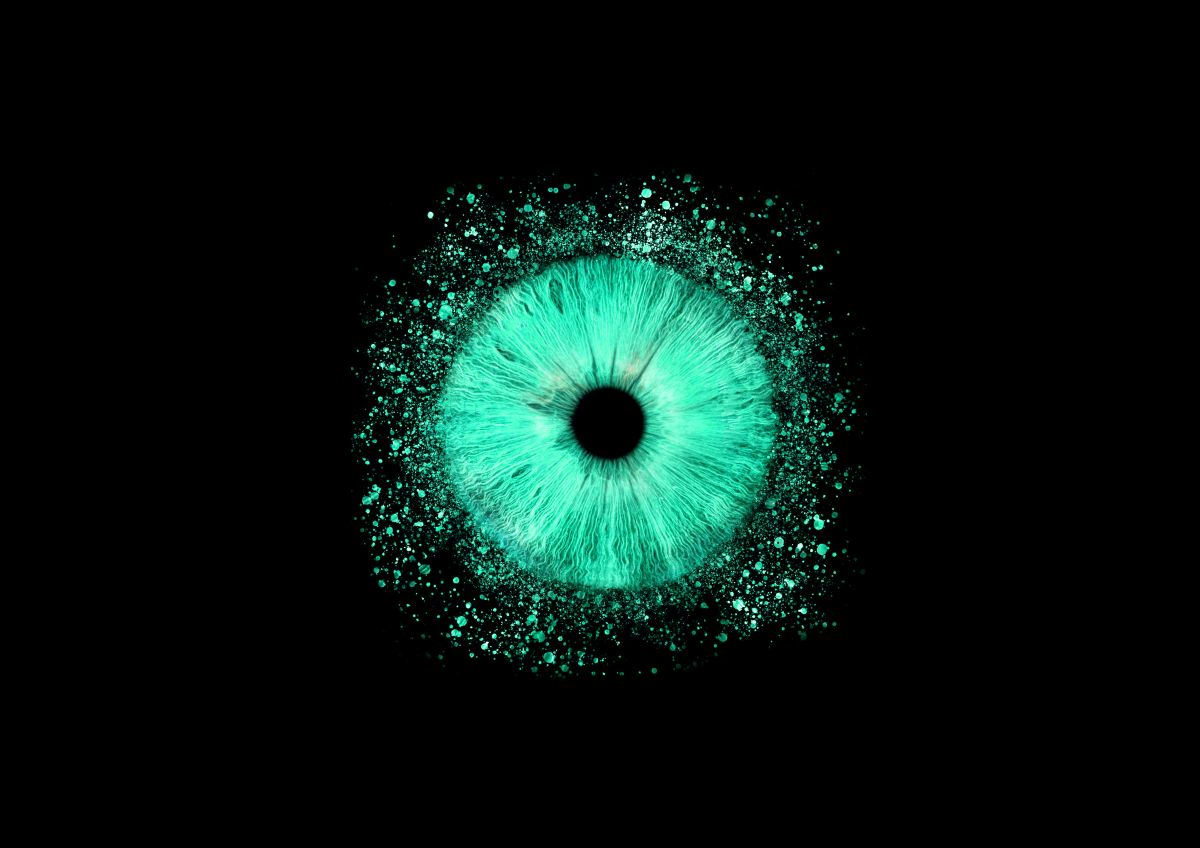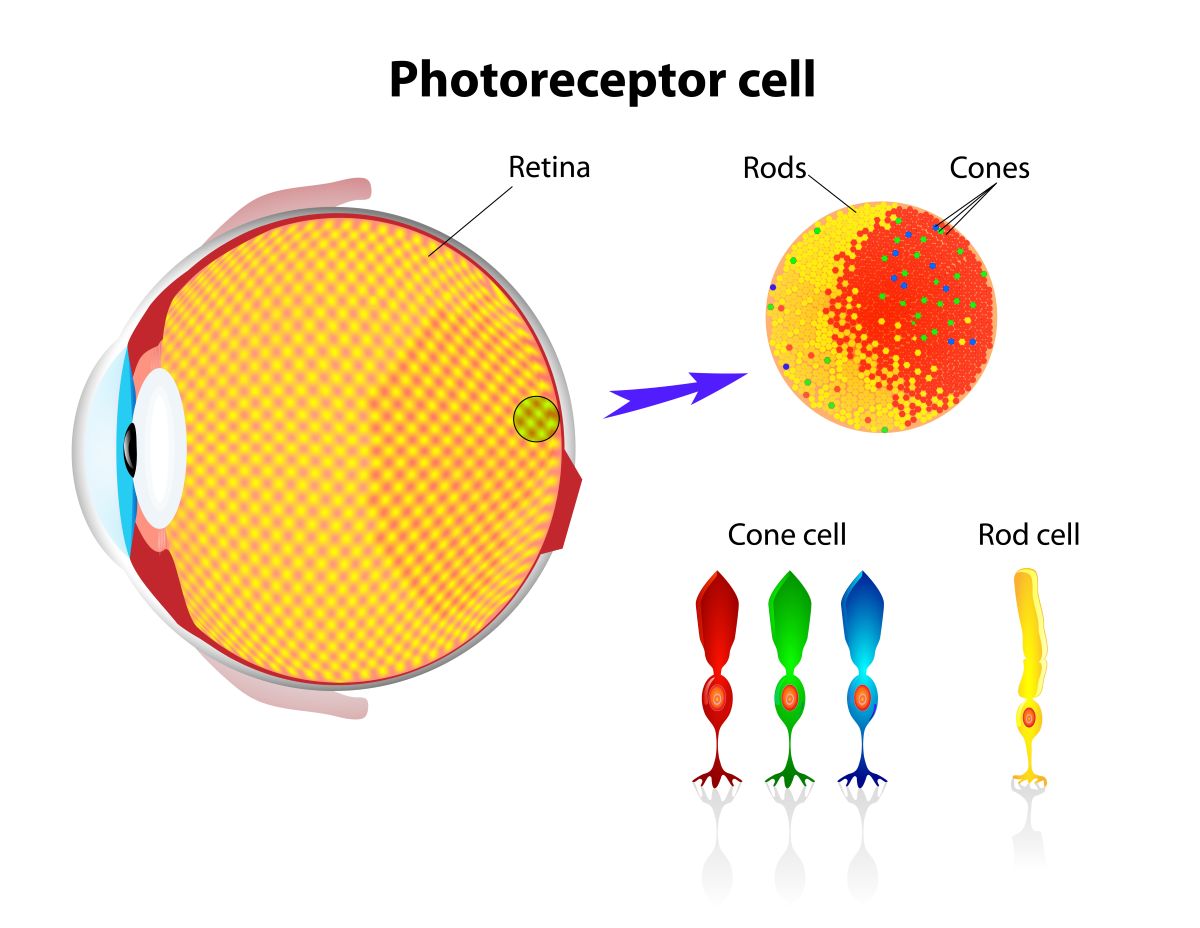Scientists unlock a colour ‘olo’ our eyes were always capable of seeing.

© Shutterstock
Musa Sattar, London, UK
In April 2025, a team of scientists at the University of California, Berkeley [1], announced they had done something remarkable: they had created a colour no one had ever seen before. It was a colour entirely outside the spectrum of natural human vision. They called it ‘olo’. The news spread quickly, and it was discussed in both scientific and mainstream media. From BBC to Smithsonian, New Scientist to Al Jazeera, headlines declared a ‘new colour discovered’ – something that sounded almost too strange to believe.
But is olo truly new? Or have our eyes and brains always had the ability to perceive it, and just waiting for the right kind of light?
The story behind olo isn’t about mixing a new shade of paint. It’s about unlocking a feature in the human visual system that’s been hidden in plain sight. And to get there, scientists had to break the rules of how colour normally works.
To understand how this happened, it helps to take a step back and look literally inside the human eye. Most people have three types of cones or photoreceptor cells on the retina: S (short), M (medium), and L (long). Each type is sensitive to different wavelengths of light, roughly corresponding to blue, green, and red. [2] These cones don’t see colours by themselves. Instead, they work like a team. Your brain compares how much each type is firing, and from that, it constructs every colour you see. It’s a bit like blending just three paint colours to create a million different shades.
Here’s the key detail: in the natural world, light almost never hits just one type of cone. A green leaf, for example, doesn’t only trigger the green-sensitive cones, but it also stimulates the red-sensitive ones.[3] Our brains are constantly interpreting overlapping signals. This is how we get the subtle range of colours in a sunset, a plum, or a copper coin.
But what if you could activate just one cone type and leave the others silent? That’s what the researchers at UC Berkeley managed to do. They developed a high-precision device named ‘Oz’ after the Wizard of Oz [4] that mapped the arrangement of cones in an individual’s eye. They used an ordinary green laser to stimulate only the middle-wavelength (green-sensitive) cones, without triggering red or blue ones. Would the result be something familiar, or would it unlock an entirely new sensory experience?
That question stuck with Professor Ren Ng, an electrical engineer at the University of California, Berkeley. As reported in Al Jazeera, Ng began to wonder whether this would create a kind of ‘greenest green’, a colour more intense than anything seen in the natural world. It wasn’t just curiosity; it was a scientific challenge. So, Ng joined forces with Austin Roorda, a professor of optometry and vision science and co-creator of the Oz technology; a precision system capable of stimulating individual photoreceptors in the human eye.
What happened next surprised even them.
When Ng finally saw the colour generated by their experiment (now named olo) his reaction was one of stunned disbelief. ‘It was jaw-dropping. It’s incredibly saturated,’ he told The Guardian, as cited in Smithsonian Magazine. In a separate interview with New Scientist, he added, ‘It’s hard to describe; it’s very brilliant.’ They had predicted the colour would be unprecedented. But they couldn’t predict how the brain would actually handle it. ‘We didn’t know what the brain would do with it,’ Ng admitted. That moment revealed just how much of our perception is still unmapped territory, an open frontier where even something as familiar as colour can turn out to be hiding a secret.
As it turns out, it’s like sending a message to the brain in a format it’s never received. The brain doesn’t ignore it – instead, it invents a new colour experience.
These five are the only people on Earth known to have seen olo so far. Three of them were part of the research team and went on to co-author the published study. The other two were scientists who had no idea what they were walking into. They were participants in the experiment, unaware that they were about to witness a colour no human had ever seen or even imagined.
Trying to describe it, those who saw it struggled to find the right words. Some reached for comparisons like ‘blue-green colour’ and ‘like a profoundly saturated teal,’ though most admitted there was no real comparison. As lead author Hannah Doyle said to Al Jazeera, ‘it’s very striking. You know you’re looking at something very blue-green.’ But that was the closest anyone could get.

© Shutterstock
What makes this discovery so fascinating is not just that a new colour was finally seen, but that it was always within reach. The cones in our eyes have had the ability to respond to this kind of stimulation since the beginning of human biology. We simply never had the tools to isolate them with such precision.
This opens up deep questions about perception. What else might our senses be capable of, under the right conditions?
In other words, our brains are ready for more than we know. All this time, it was capable of seeing olo, but it just needed the right key.
While this discovery feels like something from a science fiction novel, it’s real. And it’s based on solid, elegant biology – requiring no new mutations or cybernetic implants.
That’s what makes olo feel almost spiritual – a realisation that we are not close to uncovering nature’s secrets.
There is a verse in the Holy Qur’an that says, ‘And He has pressed into service the things He has created for you in the earth, varying in colours. Surely, in that is a Sign for a people who take heed.’ [5]
It’s a line that’s been around for over 1,400 years, and yet it reads like a caption for this very moment. The idea that colours were created not just as decoration, but as signs. Layers of meaning wrapped in light. Each colour with its own effect on your heart, your body, your thoughts.
And it’s true. Colours do affect us. Blue calms [6]. Red excites [7]. Green soothes [8]. Psychologists have shown that patients heal faster in rooms painted in earthy tones. Kids learn better in bright, playful spaces. Scientific research [9, 10] found that sports teams wearing red win more often. Not because they’re better, but because red subconsciously signals power and dominance [11, 12, 13]. Colours talk to us in ways we’re only beginning to understand.
Studies have shown that colour can affect mood [14], memory [15], decision-making and even healing [16]. Hospitals now choose wall colours based on their psychological effects [17]. Marketers carefully select brand colours to trigger emotion and behaviour. Colour isn’t just decoration. It’s information.
And the diversity of colour serves another function: helping us navigate and make sense of the world. Imagine a world with no variation – where grass, apples, and people all looked the same. As the Qur’anic commentary notes [18], such uniformity would lead to confusion. The variety in creation; colours, forms, personalities, is what makes life intelligible. This diversity isn’t random. It’s purposeful.
So, what does olo say?
Maybe it reminds us that the universe isn’t done surprising us. That the world is still full of hidden doors. Or maybe it just proves what we already suspected: that our visual sensory system are more perfectly designed than we can explain.
No random machine could evolve something like the human eye without purpose. It’s not just a camera. It’s a translator, a painter, an interpreter of light and meaning. It doesn’t just record the world; it gives it life.
That’s what makes olo such a beautiful discovery. Not just because it’s new. But because it reveals how much more we’re capable of. How elegantly we are built. And how, despite all our technology, the most powerful instrument on Earth might still be the one sitting quietly in your head, just behind your eyes.
The fact that you could see olo so easily, without training, hints at something even more profound. Your visual systems are naturally prepared for possibilities you may never encounter in daily life. There’s something almost awe-inspiring about that. As if we were built with more capacity than we use, more tools than we realise. Like a language with extra words waiting for the right moment to be spoken.
But it’s also a reminder of our limits. The reason you can’t see olo outside of a lab is because our current world with our lights, screens, pigments can’t produce the exact pattern of stimulation needed. Technology brought us to this moment, but it also shows us the boundaries of what our current devices can achieve. You can’t take a photo of olo. You can’t paint it or display it on a screen. It exists only inside the eye, under exact conditions. It requires a laboratory setting and the Oz laser system, which can target individual cone cells with remarkable accuracy. As Ren Ng explained, this is early-stage science. It is a step into the unknown, not something ready for everyday use.
According to the Science Advances [19] paper, researchers believe the Oz experiment could one day help correct certain types of colour-blindness. By precisely targeting the eye’s photoreceptors, this approach might restore full colour vision in red-green colour-blind individuals or even expand colour perception in those with typical vision, allowing them to see colours beyond the normal range.
This leads to an intriguing question: what else is locked away behind the walls of normal experience?
Scientific progress often works like this. It doesn’t just give answers. It reveals how much more there is to ask. The discovery of olo might not lead to practical applications overnight. But it reshapes our understanding of what colour is and what the brain can do. It also adds a new layer to how we see ourselves. Not just as observers of the world, but as participants in its complexity.
So maybe olo isn’t just a colour. Maybe it’s a signal to keep looking – because the world is always offering signs for those willing to see them.
About the Author: Musa Sattar has an MSc in Pharmaceutical Analysis from Kingston University and is also serving as the Assistant Manager of The Review of Religions and the Deputy Editor of the Science & Religion section.
ENDNOTES
1.https://www.science.org/doi/10.1126/sciadv.adu1052
2.https://www.ncbi.nlm.nih.gov/books/NBK11059/
3.https://physicsworld.com/a/retinal-stimulation-reveals-colour-never-before-seen-by-the-human-eye/
4.https://www.aljazeera.com/news/2025/4/26/have-scientists-discovered-a-new-colour-called-olo
5.The Holy Qur’an, 16:14.
6.https://www.psychologytoday.com/gb/blog/your-personal-renaissance/201810/surprising-research-on-the-colour-blue
7.https://pmc.ncbi.nlm.nih.gov/articles/PMC4413730/
8.https://pmc.ncbi.nlm.nih.gov/articles/PMC7855717/
9.https://www.discovermagazine.com/health/red-sports-teams-are-more-likely-to-win
10.https://redadvantage.webspace.durham.ac.uk/research/
11.https://pubmed.ncbi.nlm.nih.gov/21558586/
12.https://www.frontiersin.org/journals/psychology/articles/10.3389/fpsyg.2017.00317/full
13.https://www.colourpsychology.org/red/
14.https://gelpress.com/blogs/art-and-inspiration/colour-psychology
15.https://pmc.ncbi.nlm.nih.gov/articles/PMC3743993/
16.https://pmc.ncbi.nlm.nih.gov/articles/PMC5513653/
17.https://pmc.ncbi.nlm.nih.gov/articles/PMC8921019/
18.Hazrat Mirza Bashiruddin Mahmud Ahmadra, The Holy Quran with Five Volume Commentary – Vol 3, Ch. 16 V. 14 (Farnham, Surrey: Islam International Publications Ltd., 2019).
19.https://www.science.org/doi/10.1126/sciadv.adu1052




Add Comment